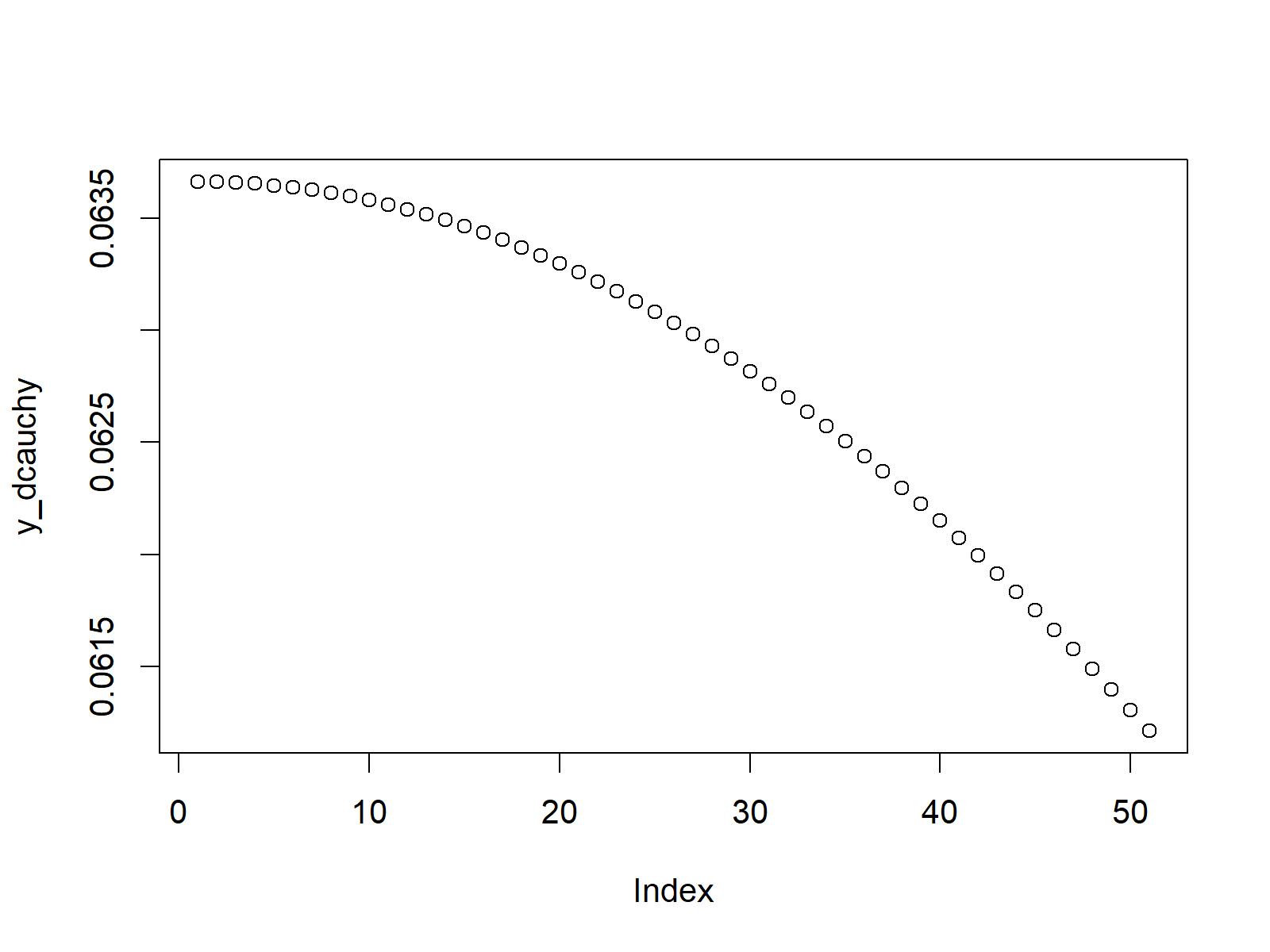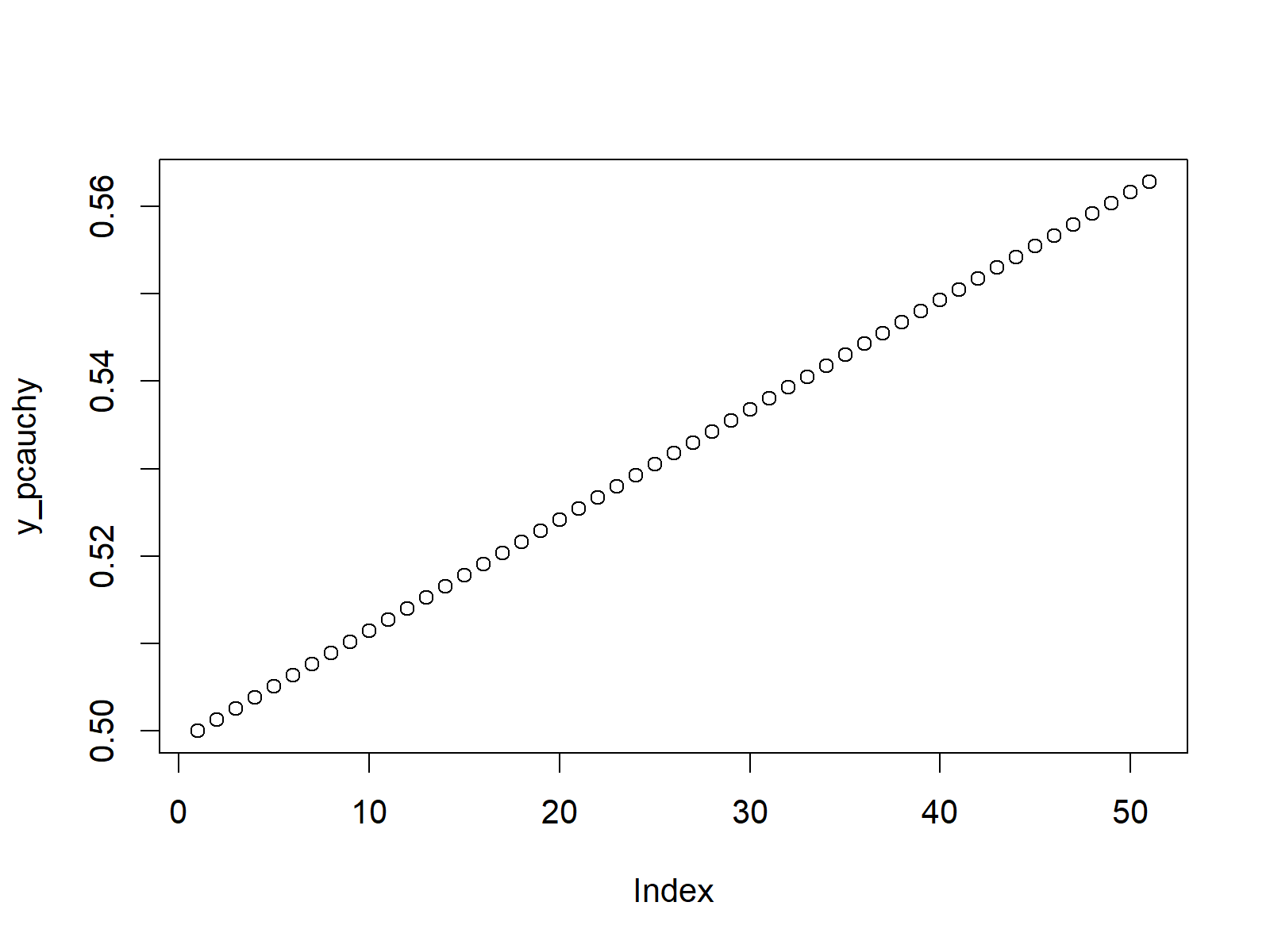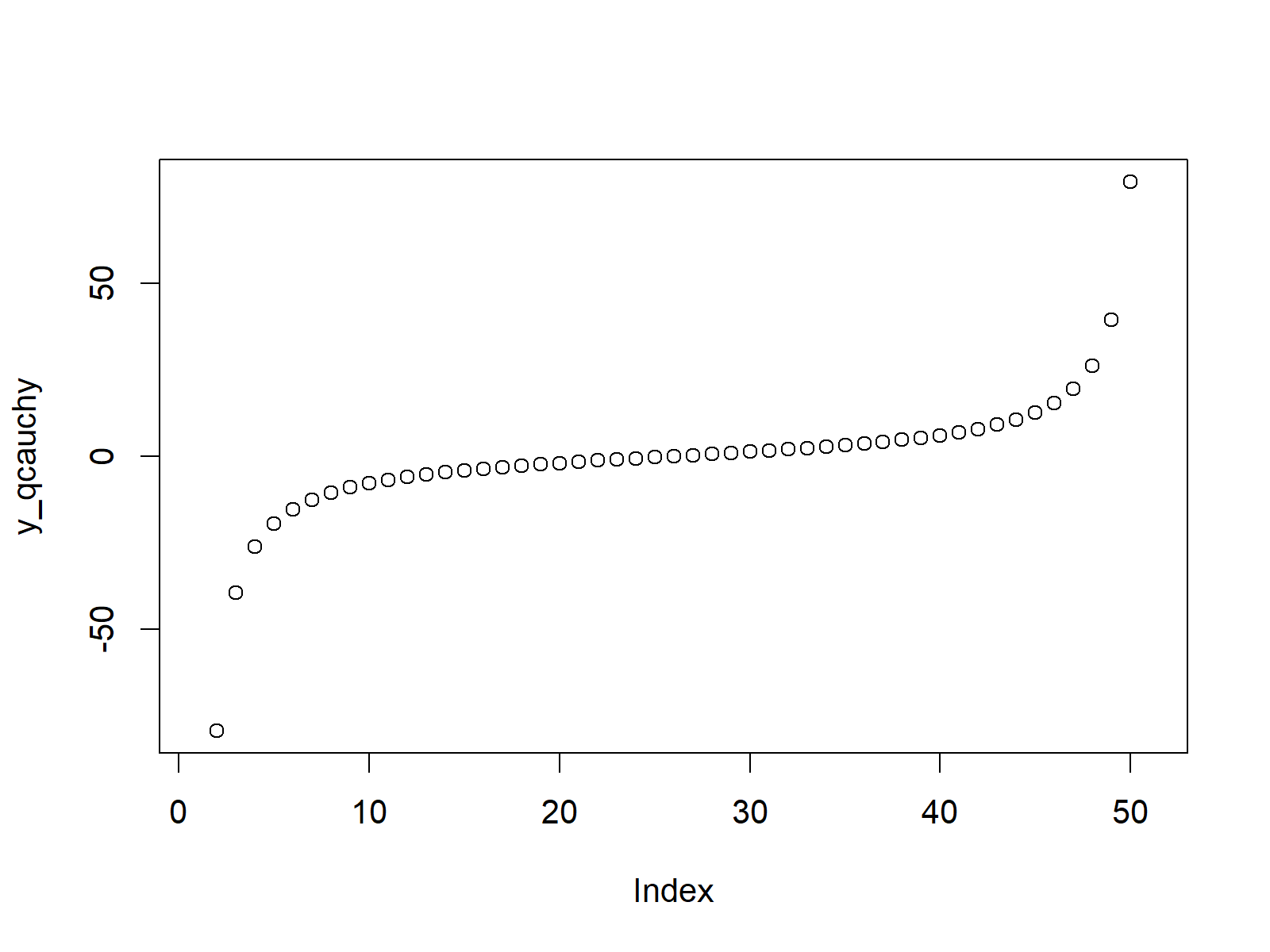Cauchy Density in R (4 Examples) | dcauchy, pcauchy, qcauchy & rcauchy Functions
In this R tutorial you’ll learn how to apply the cauchy functions.
The page contains four examples for the application of dcauchy, pcauchy, qcauchy, and rcauchy. More precisely, the article will consist of this content:
- Example 1: Cauchy Density in R (dcauchy Function)
- Example 2: Cauchy Cumulative Distribution Function (pcauchy Function)
- Example 3: Cauchy Quantile Function (qcauchy Function)
- Example 4: Random Number Generation (rcauchy Function)
- Video, Further Resources & Summary
Let’s get started:
Example 1: Cauchy Density in R (dcauchy Function)
In Example 1, I’ll show you how to create a density plot of the cauchy distribution in R. First, we need to create an input vector containing quantiles:
x_dcauchy <- seq(0, 1, by = 0.02) # Specify x-values for cauchy function
Now, we can apply the dcauchy R function to return the values of a cauchy density. In the examples of this tutorial, we use a scale of 5. However, you could modify the R syntax according to your specific preferences.
y_dcauchy <- dcauchy(x_dcauchy, scale = 5) # Apply dcauchy function
Our cauchy density values are now stored in the data object y_dcauchy. If we want to draw a density plot based on these values, we can use the plot function as shown below:
plot(y_dcauchy) # Plot dcauchy values

Figure 1: Cauchy Density in R.
Example 2: Cauchy Cumulative Distribution Function (pcauchy Function)
Example 2 shows how to draw a plot of the cumulative distribution function (CDF) of the cauchy distribution. As a first step, we need to create a vector of quantiles:
x_pcauchy <- seq(0, 1, by = 0.02) # Specify x-values for pcauchy function
We can now apply the pcauchy R function to get the cauchy CDF values of our input vector:
y_pcauchy <- pcauchy(x_pcauchy, scale = 5) # Apply pcauchy function
The final graphic can be created as follows:
plot(y_pcauchy) # Plot pcauchy values

Figure 2: Cumulative Distribution Function of Cauchy Distribution.
Example 3: Cauchy Quantile Function (qcauchy Function)
The qcauchy command takes an input vector of probabilities and returns the corresponding values of the cauchy quantile function. Consider the following input vector:
x_qcauchy <- seq(0, 1, by = 0.02) # Specify x-values for qcauchy function
Now, the qcauchy function is applied as follows…
y_qcauchy <- qcauchy(x_qcauchy, scale = 5) # Apply qcauchy function
…and the corresponding scatterplot is created as follows:
plot(y_qcauchy) # Plot qcauchy values

Figure 3: Quantile Function of Cauchy Distribution.
Example 4: Random Number Generation (rcauchy Function)
We can also simulate random numbers that are distributed as the cauchy density. First, we need to specify a seed to ensure reproducibility and a sample size that we want to generate:
set.seed(13579) # Set seed for reproducibility N <- 10000 # Specify sample size
Now, we can apply the rcauchy function to create a set of random values as follows:
y_rcauchy <- rcauchy(N, scale = 5) # Draw N cauchy distributed values y_rcauchy # Print values to RStudio console
A histogram of our random data can be created as follows:
hist(y_rcauchy, # Plot of randomly drawn cauchy density xlim = c(- 200, 200), breaks = 10000, main = "")

Figure 4: Random Sample with Cauchy Distribution.
Video, Further Resources & Summary
In case you need more explanations on the R programming codes of this page, you may watch the following video of my YouTube channel. I’m explaining the examples of this tutorial in the video:
The YouTube video will be added soon.
You might also have a look at the other articles on probability distributions and the simulation of random numbers in the R programming language:
- Bernoulli Distribution in R
- Beta Distribution in R
- Binomial Distribution in R
- Bivariate & Multivariate Distributions in R
- Cauchy Distribution in R
- Chi-Squred Distribution in R
- Exponential Distribution in R
- F Distribution in R
- Gamma Distribution in R
- Geometric Distribution in R
- Hypergeometric Distribution in R
- Log Normal Distribution in R
- Logistic Distribution in R
- Negative Binomial Distribution in R
- Normal Distribution in R
- Poisson Distribution in R
- Student t Distribution in R
- Studentized Range Distribution in R
- Uniform Distribution in R
- Weibull Distribution in R
- Wilcoxon Signedank Statistic Distribution in R
- Wilcoxonank Sum Statistic Distribution in R
Besides the video, you may want to have a look at the other tutorials of my website. I have published several posts already:
You learned in this tutorial how to handle the cauchy functions in the R programming language. Don’t hesitate to let me know in the comments section below, in case you have any additional comments or questions.






